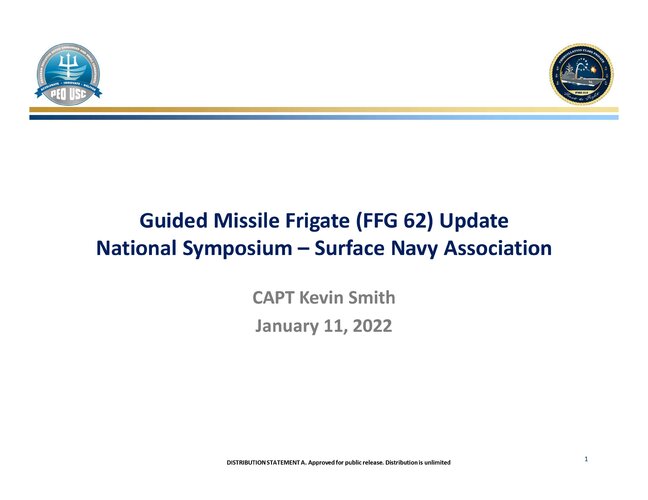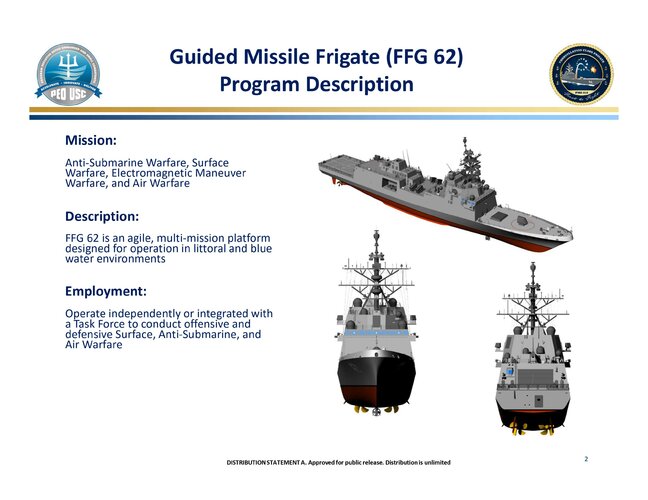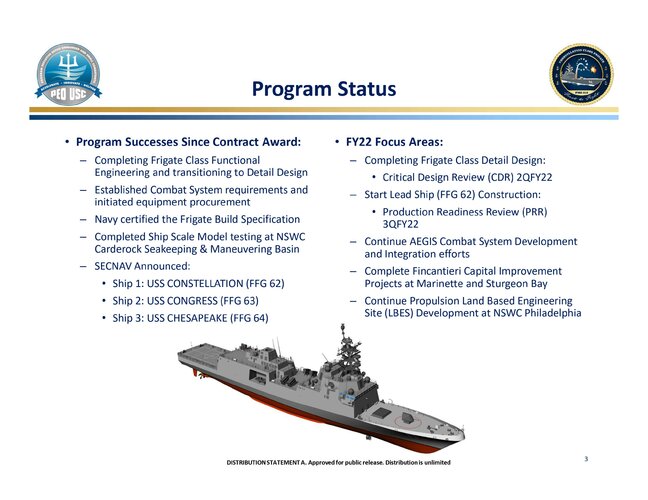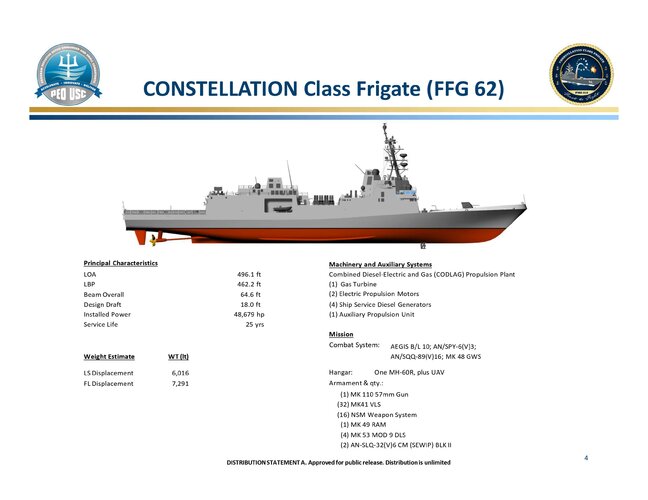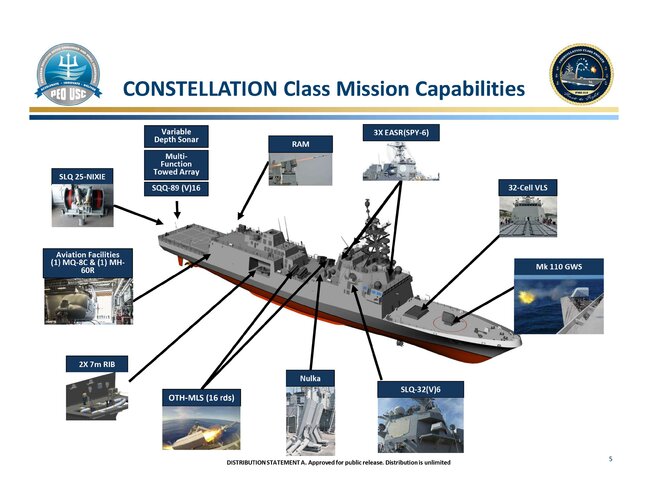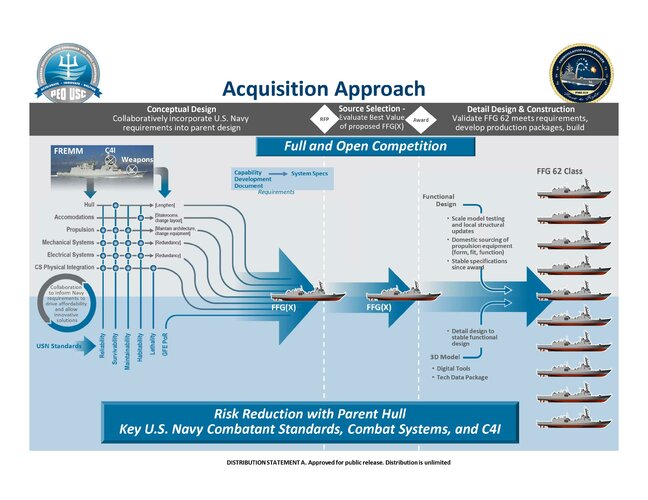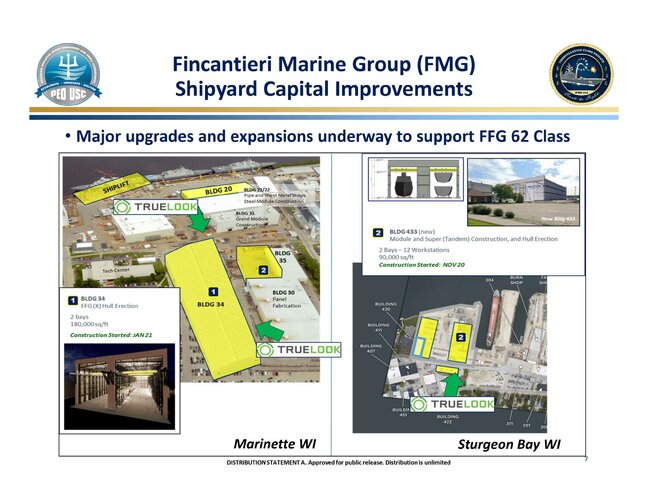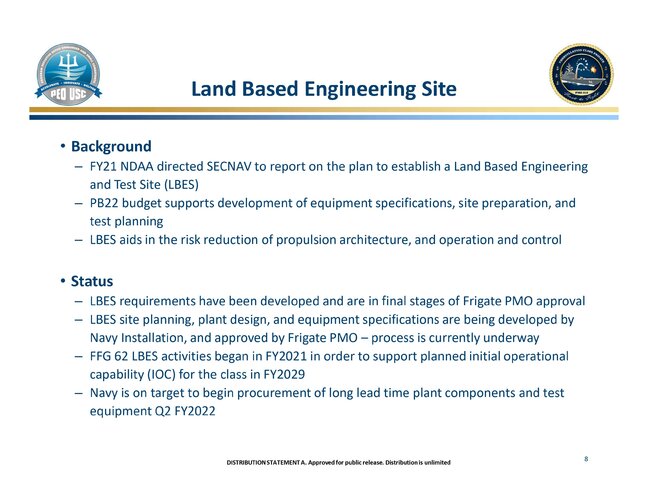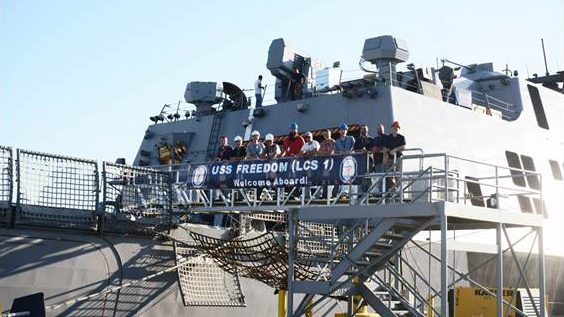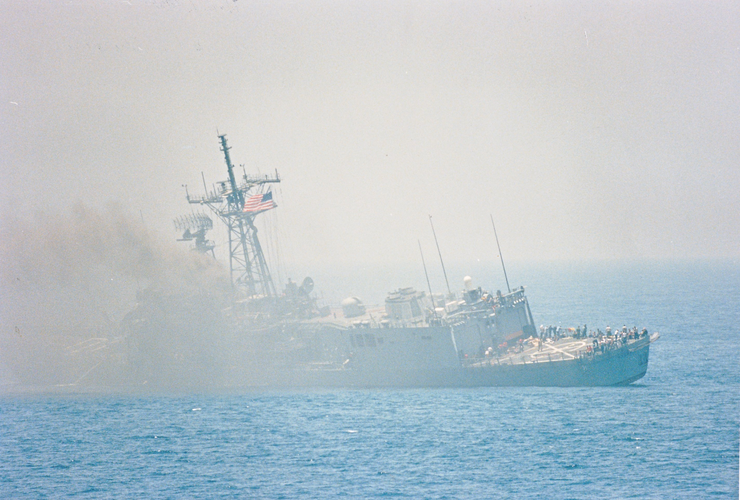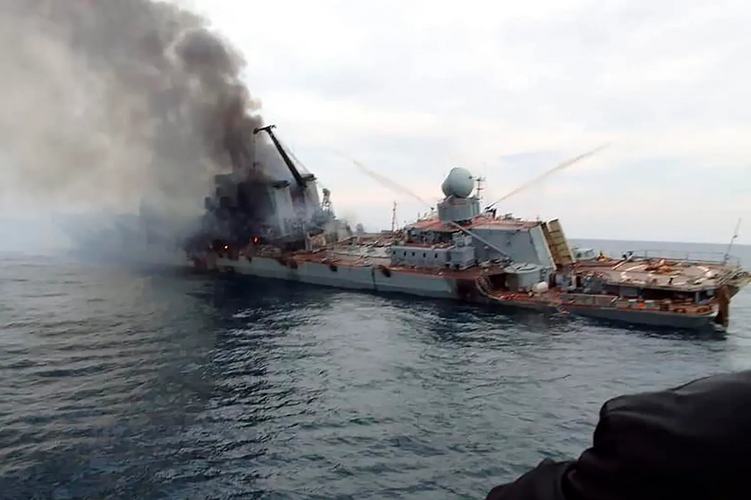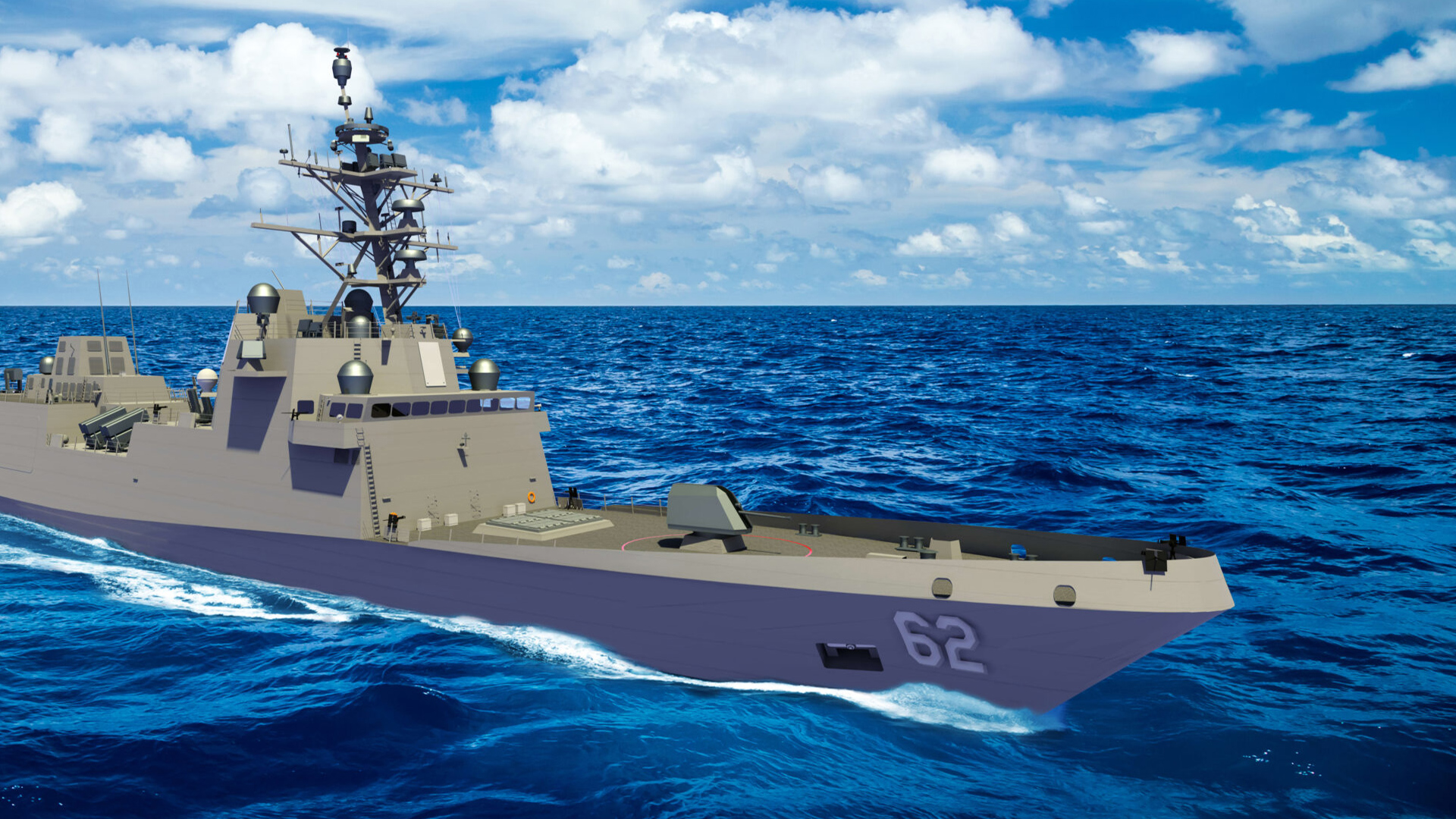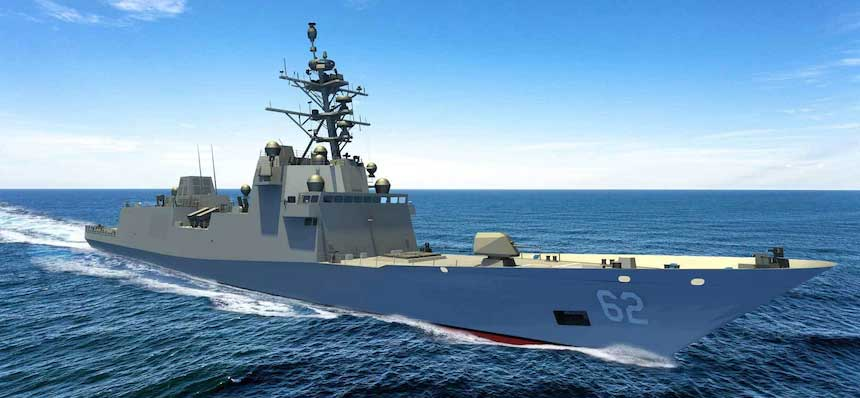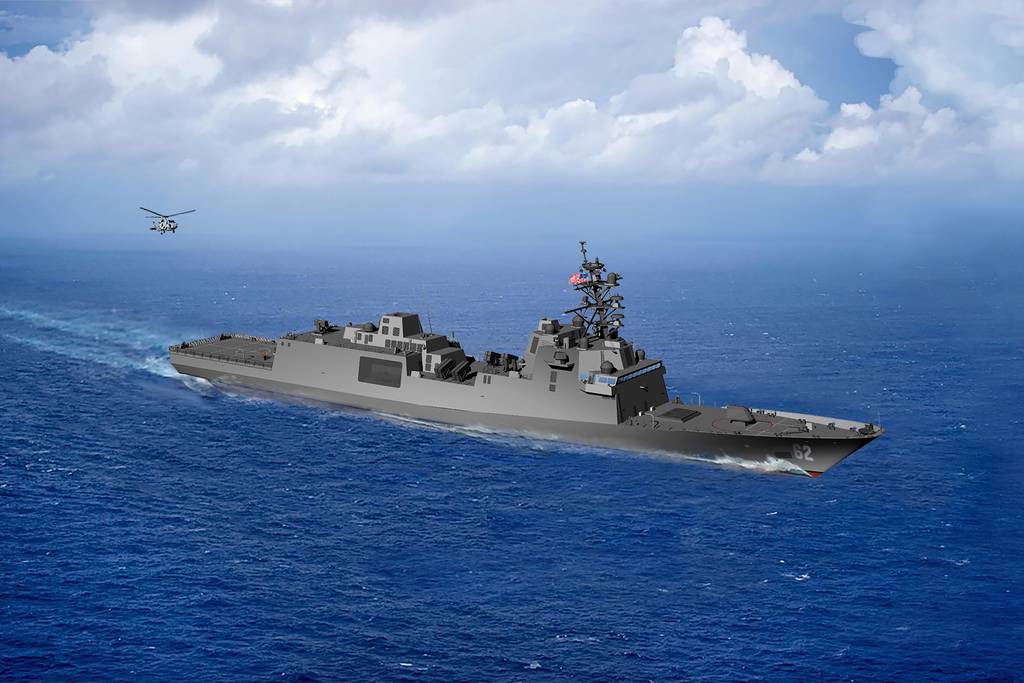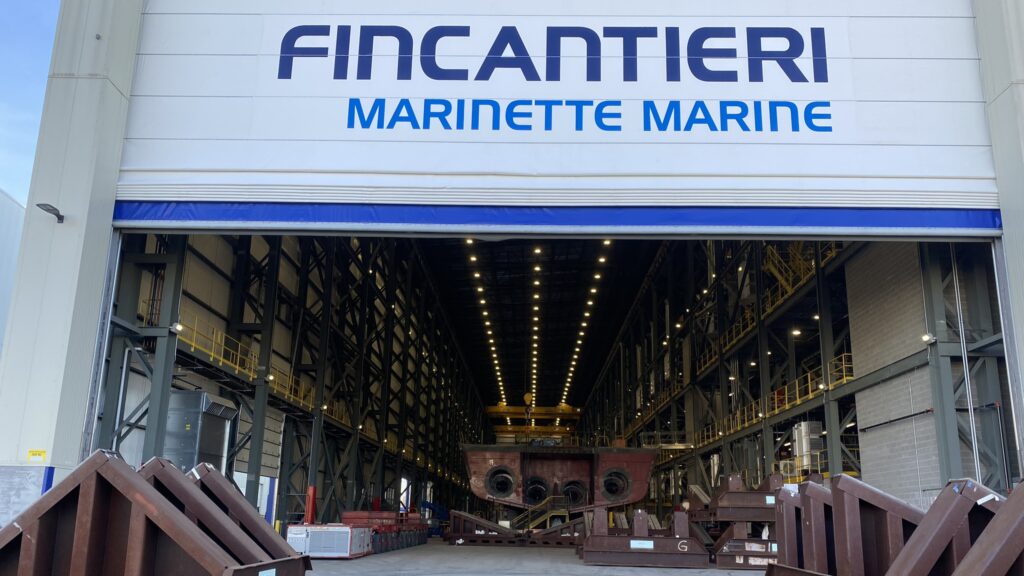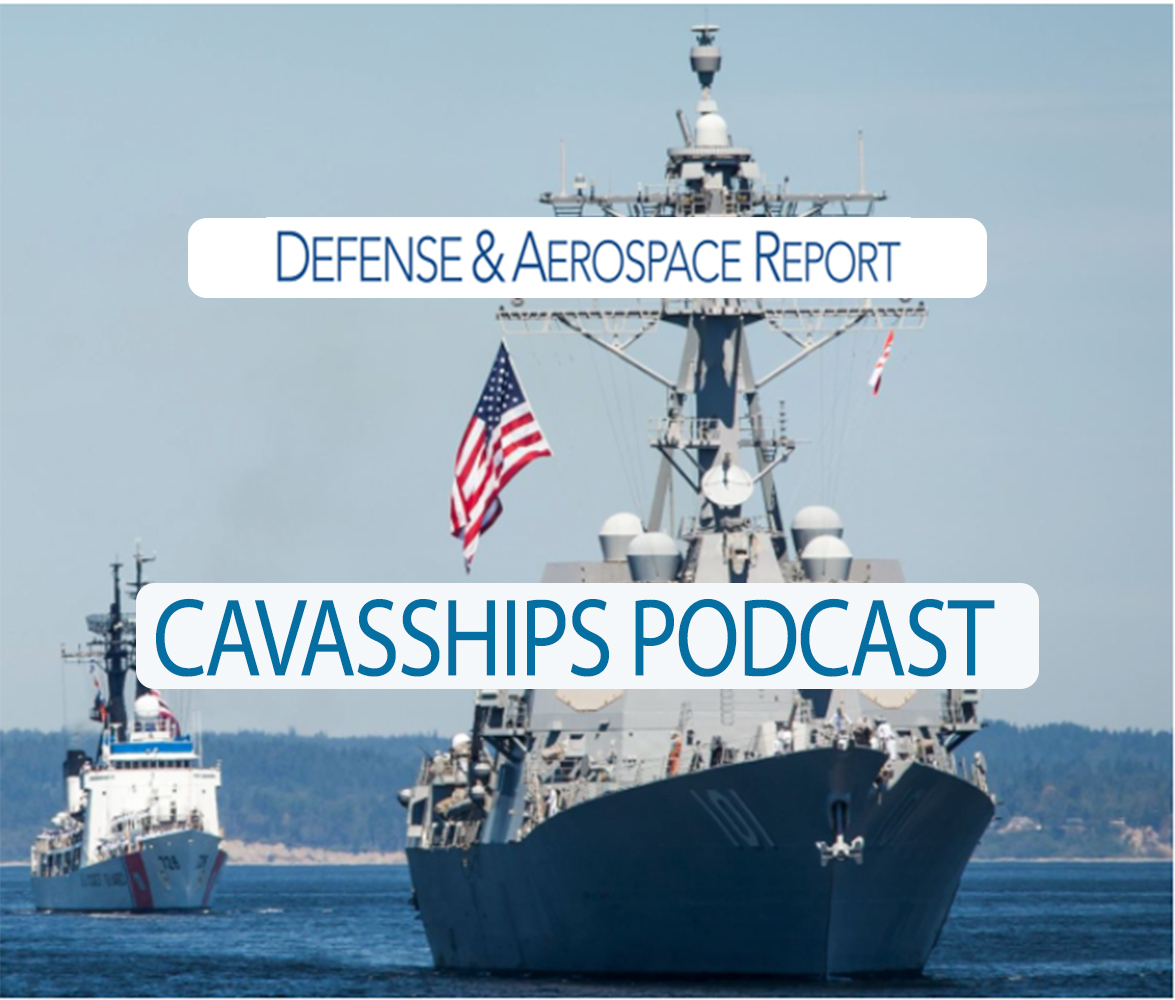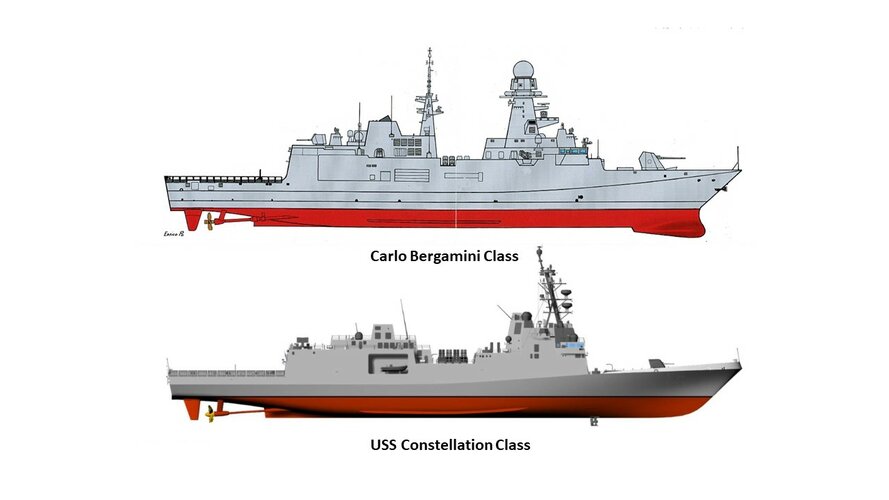IS SQL-32(V)6 the version on FFGX? I would have thought there would at least be an active component.
According to the slides posted on Jan 12, yes.
I'm a bit surprised, too. But the USN has a history of cheaping out on EA for frigates and then backfiring it later (Sidekick, for example). NG is definitely pushing a version of SEWIP III Lite with EA capability for the frigates and the initial 2019 capabilities slide for FFG(X) included SWAP-C for that when it becomes available. It also included an ability to work with the Advanced Off-Board Electronic Warfare (AOEW) pod on helicopters, so it's not like they're ignoring EA entirely.
It may well just be that SEWIP III is too big (it's really huge) and III Lite isn't available until after IOC for the frigates.

